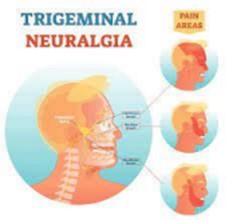The nurse is caring for a client diagnosed with trigeminal neuralgia. The client asks the nurse, "Why do I have so much pain?" Which of the following responses by the nurse is most appropriate?
A "It's a local reaction to nasal stuffiness."
B "It's due to a hypoglycemic effect on the cranial nerve."
C "Release of catecholamines with infection or stress leads to the pain."
D "Pain is due to stimulation of the affected nerve by pressure and temperature.
The Correct Answer is D
Choice A Rationale: Linking the pain to nasal stuffiness is not an accurate explanation of trigeminal neuralgia.
Choice B Rationale: Hypoglycemia is not typically related to trigeminal neuralgia.
Choice C Rationale: Releasing catecholamines with infection or stress is not the primary cause of trigeminal neuralgia.
Choice D Rationale: Pain is often due to stimulation of the affected nerve by pressure and temperature. This is a more accurate and relevant explanation for trigeminal neuralgia.

Nursing Test Bank
Naxlex Comprehensive Predictor Exams
Related Questions
Correct Answer is A
Explanation
Choice A Rationale: The client receiving an influenza vaccine 4 weeks ago is relevant because Guillain-Barre syndrome can sometimes be triggered by infections or vaccinations, including influenza vaccines.
Choice B Rationale: The client's hobby of golfing is not directly related to the described symptoms.
Choice C Rationale: Canning jams and preserves is not directly related to the described symptoms.
Choice D Rationale: A history of diabetes, while important for the client's overall health, may not be directly related to the current manifestations.
Correct Answer is D
Explanation
Choice A Rationale: Eating only cold foods is not a common recommendation for preventing trigeminal neuralgia flare-ups.
Choice B Rationale: Massaging the affected side multiple times a day is not typically recommended and may exacerbate symptoms.
Choice C Rationale: Applying heat or cold to alleviate symptoms can vary depending on individual preferences and is not a primary preventive measure for triggering an acute onset.
Choice D Rationale: Using a soft bristle toothbrush and warmed mouthwash is a recommended preventive measure to avoid triggering acute episodes of trigeminal neuralgia. It helps reduce irritation to the affected nerves.
Whether you are a student looking to ace your exams or a practicing nurse seeking to enhance your expertise , our nursing education contents will empower you with the confidence and competence to make a difference in the lives of patients and become a respected leader in the healthcare field.
Visit Naxlex, invest in your future and unlock endless possibilities with our unparalleled nursing education contents today
Report Wrong Answer on the Current Question
Do you disagree with the answer? If yes, what is your expected answer? Explain.
Kindly be descriptive with the issue you are facing.
